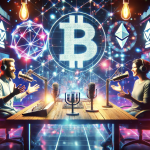The gaming industry has always been at the forefront of technological innovation, constantly evolving and pushing the boundaries of what’s possible. In recent years, one of the most groundbreaking developments has been the emergence of GameFi, a fusion of gaming and decentralized finance (DeFi). This revolutionary concept is not just changing the way we play games; it’s transforming the economic landscape for gamers across the globe, empowering them with new ways to earn and invest.
The Genesis of GameFi
GameFi, short for “game finance,” combines the immersive experience of online gaming with the financial mechanics of cryptocurrencies and blockchain technology. At its core, GameFi introduces a “play-to-earn” model, where players can earn real-world value through their in-game activities. This model is a departure from traditional gaming’s “pay-to-play” or “free-to-play” models, where the financial flow primarily benefits game developers and publishers.
Economic Empowerment through Play
The play-to-earn model is a game-changer for players, especially in regions with limited economic opportunities. In these areas, GameFi projects have provided a viable means of income for many. For instance, popular games like “Axie Infinity” have seen players from countries such as the Philippines earn a significant income by breeding, trading, and battling in-game creatures known as Axies. This paradigm shift has introduced the concept of the player’s economy, where value is generated and owned by the players themselves.

The Technology Behind GameFi
Blockchain technology is the backbone of GameFi, ensuring transparency, security, and authenticity. Through blockchain, in-game assets become tokenized, allowing for ownership, trade, and transfer in ways that were previously impossible. These assets, whether they are characters, items, or land, are represented as non-fungible tokens (NFTs), each with unique properties and values. The decentralized nature of blockchain means that players have true ownership of their assets, free from the control of game developers.
The Challenges Ahead
Despite its promise, GameFi faces several challenges. Scalability issues, environmental concerns related to energy consumption, and the need for more regulatory clarity are among the hurdles that the industry must overcome. Additionally, the sustainability of play-to-earn models and the risk of market saturation with low-quality games are concerns that developers and players alike must address.
The Future of GameFi
As the GameFi ecosystem continues to mature, we are likely to see more innovative use cases and business models emerge. Integration with other sectors, such as virtual reality (VR) and augmented reality (AR), could further enhance the gaming experience. Moreover, the development of new blockchain solutions and the entrance of traditional gaming giants into the GameFi space could drive wider adoption and acceptance.
Conclusion
GameFi represents a significant leap forward in the gaming industry, offering players not just entertainment but a stake in the game’s economy. By empowering players with the ability to earn, own, and trade in-game assets, GameFi is creating a new world of opportunities. However, as with any emerging technology, there are challenges to be navigated. Despite these hurdles, the potential of GameFi to reshape the gaming landscape and provide economic empowerment to players around the world is undeniable. As the technology evolves and the community grows, the future of GameFi looks bright, promising an exciting new chapter in the world of gaming.








